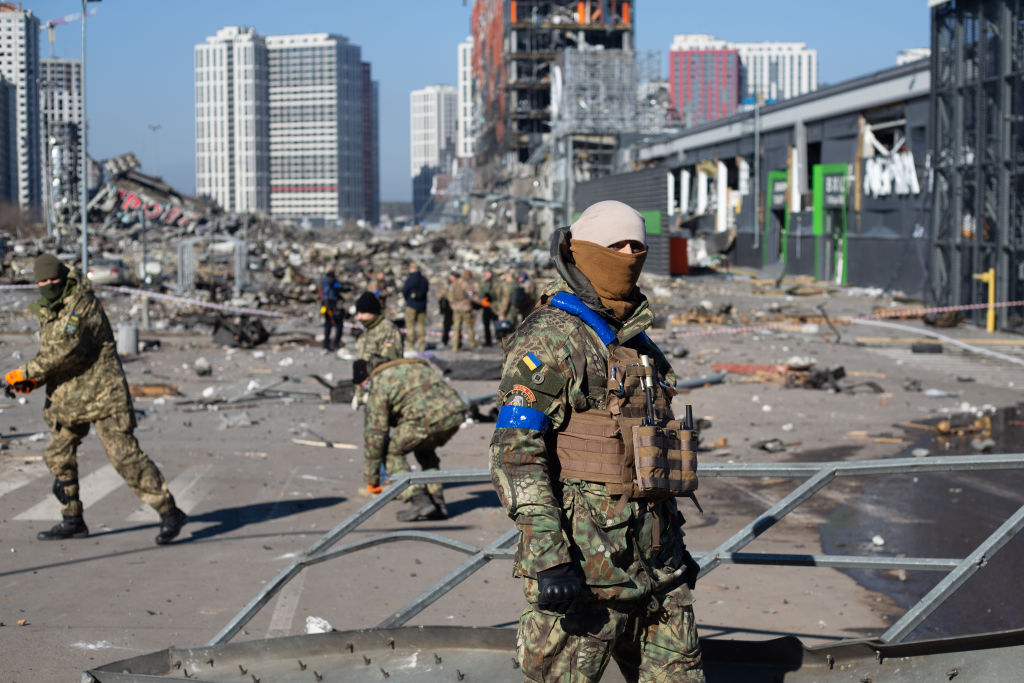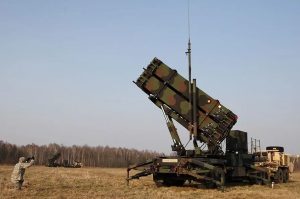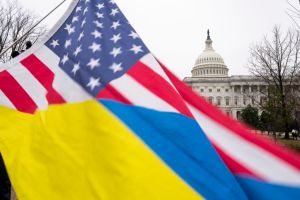The simplest description of the war in Ukraine is this: stalemate, accompanied by constant, deadly bombardment.
For the Ukrainians, that bombardment is aimed at the Russian military. For the Russians, it is aimed mostly at civilian targets, a deliberate strategy that is also a war crime. Russian artillery shells, cluster bombs and cruise missiles are killing tens of thousands of Ukrainian civilians and destroying their homes, schools and businesses. Meanwhile, Ukraine’s counterattack is imposing huge, irreplaceable losses on Russia’s army, killing soldiers, destroying their equipment and liquidating incompetent military leaders who come to the front to untangle the mess.
Russia’s initial war plan failed, abysmally. That plan was to seize Kyiv swiftly (expecting to be welcomed), decapitate the Zelensky regime and install a puppet government. Not only did they fail to seize the capital city, their brutal, unprovoked attack fostered a nationalist resistance so intense that neither the Russian army nor a puppet regime will ever be able to pacify the country. In fact, they don’t have the soldiers to take cities in house-to-house fighting (which takes about ten attackers for each defensive fighter), much less to hold those cities. Other than that, the plan is going just great.
Russia’s military strategy resembles Pete Seeger’s song about the Vietnam War, “We were knee deep in the Big Muddy but the big fool said to push on.” As they keep pushing, a later verse says they are now “waist deep” and “the big fool says to push on.” The big fool here is Putin.
The “Big Muddy” is not a metaphor for Ukraine’s terrain in the springtime. It’s an accurate description. Local defenders have compounded these natural advantages by flooding territory north of Kyiv, which Russia needs for its resupply routes. They are, quite literally, bogged down.
Most other lines of Russian attack have also stalled. Clausewitz termed that condition the “culmination,” where the initial goals and objectives are recognized as unobtainable. In Ukraine’s case, that is turning into a bloody war of attrition. The single most important thing to know about a war of attrition is that the “winner” is not the side that crushes and extinguishes the enemy and marches triumphant into its capital city, as the US and its allies did to Germany, Italy and Japan in World War Two.
In a war of attrition, the “winner” is the side that can hold out longer, keep its army in the field fighting until the other side simply gives up, as the US did in Afghanistan and Vietnam and as Britain did against George Washington’s Continental Army. King George III and Lord North could have continued the war after the surrender at Yorktown, but they decided it wasn’t worth it. Put differently, in a war of attrition, you win by not losing, by having the wherewithal to continue fighting and the will to keep doing so. Both Ukraine and Russia are making that decision now and trying to figure out if there is any possibility of a negotiated solution. A deal is possible only if there is some overlap between the two sides’ minimal goals. Right now, there isn’t.
Despite Russia’s manifest failures, it has had one partial success: establishing a land bridge between Crimea and the Donbas and Luhansk regions, both of which it seized in 2014. The effort to build that corridor, which connects directly to Russia, is now in its final, brutal stages, with Russian artillery turning Mariupol’s physical structures to rubble and its people to corpses. The Russians are still trying, so far without success, to surround and strangle Kyiv, as well as Kharkiv, which stands midway between Kyiv and Luhansk. If they can take Kharkiv and finish the battle for Mariupol, then they hope to transfer forces westward to encircle Kyiv.
In the south, the Russians have still not managed to get across the major river between Crimea and Odessa, Ukraine’s largest port on the Black Sea. The river is a formidable obstacle. So is the fierce resistance in the river city of Mykolaiv. If Russia succeeds, however, it will leave Ukraine landlocked, unable to export its grains and minerals cheaply to world markets. Russian success there would be a devastating blow, but success is far from certain.
As for western Ukraine, where millions have fled, Russia has not committed any ground forces and is unlikely to do so. It has lobbed some long-distance missiles at military and civilian targets there, hoping to intimidate the local population, destroy some military assets, and, most important, impede NATO’s resupply routes for Ukrainian forces. Those are still open, and defensive weapons are pouring in through secret routes. They are getting through to Ukraine’s regular forces and urban volunteer fighters, too. Russia has not managed to stanch the flow, except for at Mariupol, on the Sea of Azov in the east.
The irony of Russia’s botched war plan is that it failed for the same reasons Hitler’s blitzkrieg did on the outskirts of Moscow. The German strategy was to move very quickly, avoid hitting any strongholds, get behind enemy lines and seize the capital. That came to a grinding halt when the Red Army dug in around Moscow (and later Stalingrad) and confronted the Germans from entrenched positions with interior lines of communication and resupply. It moved its factories farther east, well beyond German range. The Wehrmacht’s own logistical lines stretched back to Germany and Poland and were too long, thin and vulnerable to resupply a force unprepared for this kind of fight. Sound familiar? It should. When Ukrainian troops prevented the rapid seizure of Kyiv, it also cut off Russian resupplies, which came both from Belarus (a short trip) and Russia (a much longer one). And, of course, the Russians were totally unprepared for this kind of siege warfare.
Russia’s men and materiel are now stretched to the limit. Actually, they’re overstretched. They still may still make some progress in the east, and they will certainly keep trying to encircle Kyiv and Kharkiv. They don’t have nearly enough troops for the job right now, but they are sending more, with some coming from the regiments guarding the regime in Moscow. Most, however, are simply young, raw recruits who will add little to Russian strength and much to their families’ grief. The recruits from Chechnya have already been wiped out, and those from Syria were only a desert mirage.
The Russian military might call it quits if Putin agreed, but he can’t. To admit defeat would be his political death sentence, and probably his personal one. That means Russia will only give up if there’s a coup by insiders in the military and security services (which Putin is already purging), or a favorable, negotiated solution. Insiders might act if their personal safety is threatened or if they cannot contain massive anti-war demonstrations. So far, there haven’t been such demonstrations. Public resistance has been small and immediately smashed. The question is what will happen when the death notices begin reaching well over 7,000 Russian families. Will mothers and grandmothers come out into the streets, as they did to bring down the Argentine junta? Will the military be willing to jail or kill them if the numbers are large?
If the competence and will to fight among Russian forces is weak, it is strong among their opponents, who are well supplied, well trained and ready to engage. What Ukrainian political leaders worry about is less outright military defeat and more the rising civilian death toll and catastrophic physical destruction.
One possible solution to this stalemate would be Ukraine acknowledging it won’t seek to join NATO (it has already acknowledged as much), but without giving up its right to self-defense or its economic ties with the West, including possible EU membership. It might acknowledge the loss of Crimea and some parts of Luhansk or Donetsk, but not the area north of Crimea, including Kherson and Zaporizhia, and not Mariupol and the “land bridge” areas Russia did not hold before the invasion.
Painful as those losses would be for Ukraine, they are probably too modest for Putin to accept. Why? Because he would fear, rightly, that Russians might resist his leadership after paying such a high price for such small gains. That price would continue if the economic sanctions remained. Even if western powers agreed to remove those sanctions, most investors would fear returning. Putin might well calculate he couldn’t survive such a settlement politically. Or he may be too emotionally committed to the fight or too misinformed about the likely outcome to give up. As Michael Mandelbaum has said, “high repression systems are low information systems.” That’s certainly true of Putin’s Kremlin, where seldom is heard a discouraging word at Putin’s long table.
For Ukraine and the West, the biggest threat is that Putin might try to break this stalemate by using chemical weapons, or worse. Doing so would be foolish, reckless, criminal and self-defeating. But, then, that describes Putin’s entire war plan.


















